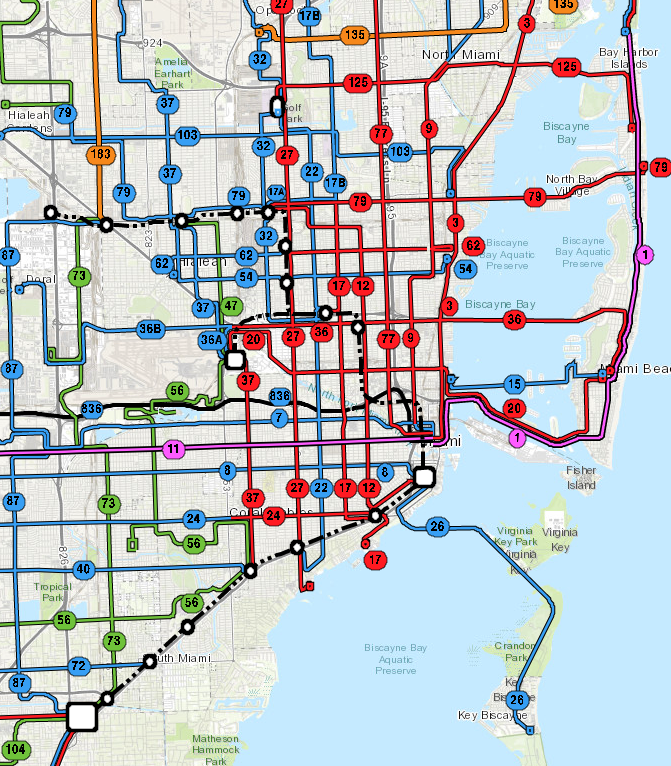Our collaboration with the amazing folks at Transit Alliance Miami has reached its conclusion: A new bus network coming for all of Miami-Dade county. Here you’ll find maps and info about the new network, and at the bottom of that page you’ll find all of the reports we produced along the way, scheduled to be implemented later this year.
For the central area, here’s the existing system:
Colors mean all-day frequency! Purple = 12 minutes or better. Red = 15. Orange = 20, Blue = 30. Green = 60.
And here’s the new network. Fewer routes, less duplication, more frequency.
(This is not our mapping style, by the way. It’s from a tool developed by Kittelson Associates that lets you move a slider back and forth between the two maps, so that you can see how different they are in the same place. It can be a little clunky. Look close for a vertical grey bar and you’ll find you can slide it left and right. If it isn’t working, reload.)
The plan lays out meager resources for bus service in a more equitable way, focusing on frequent service on a one-mile grid across the denser inner parts of the county. It will dramatically expand where people can get to quickly across the county, although often people will have to walk further to better frequency.
My biggest regret about the project? Most of the bigger cities in the region have their own municipal transit systems, and we had wanted to get better integration between them, which would have created even more improvement in access. We had good staff engagement with three of the four biggest municipal operators: Miami, Miami Beach, and Doral. In the end, though, the Miami City Council didn’t support redesigning their shuttle system to work with the revised bus network.
I hope that in the future the cities will look closer at how to build better local networks that work with Miami-Dade transit instead of duplicating it. Los Angeles County is a good model: There’s a regional agency and lots of municipal ones, but region and cities have worked together to decide who’ll run which segment, and how to make it all work as a single network that helps everyone get where they want to go.


Comments are closed.